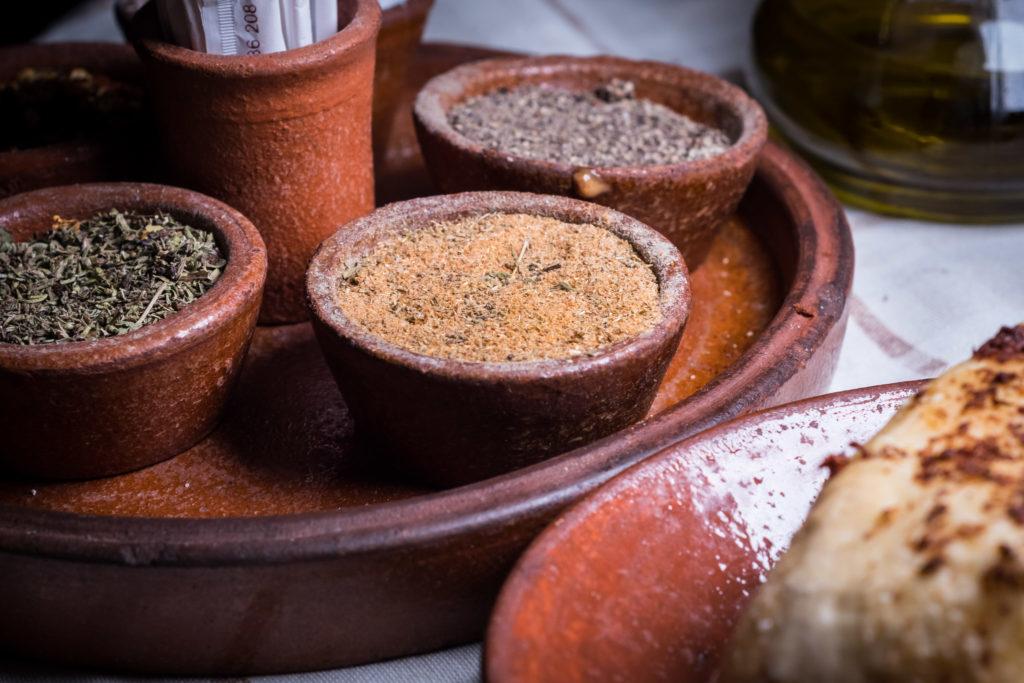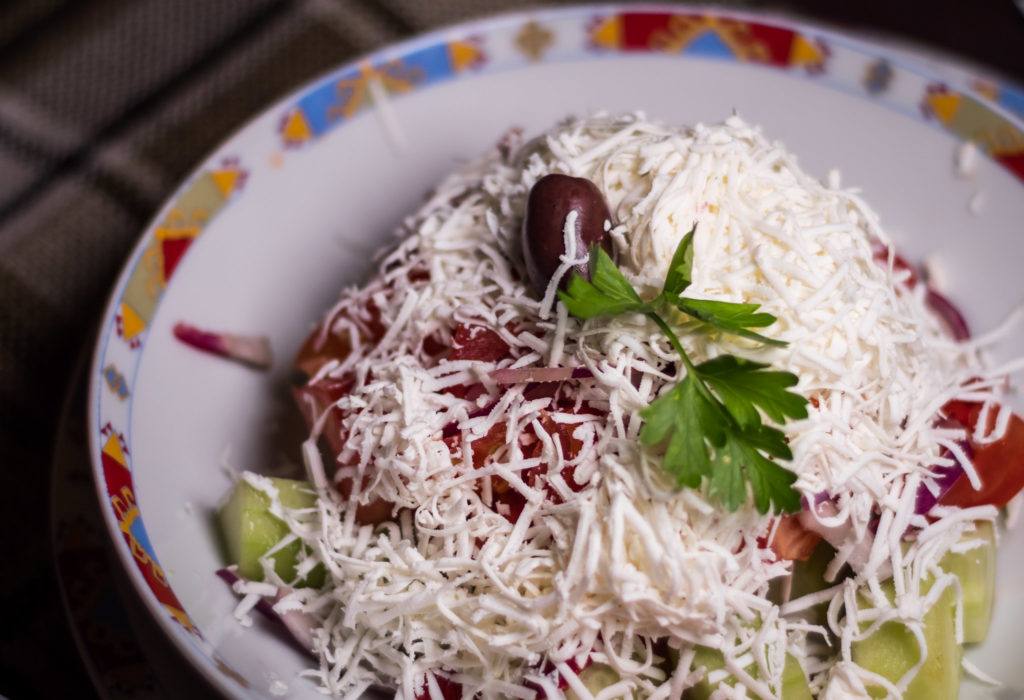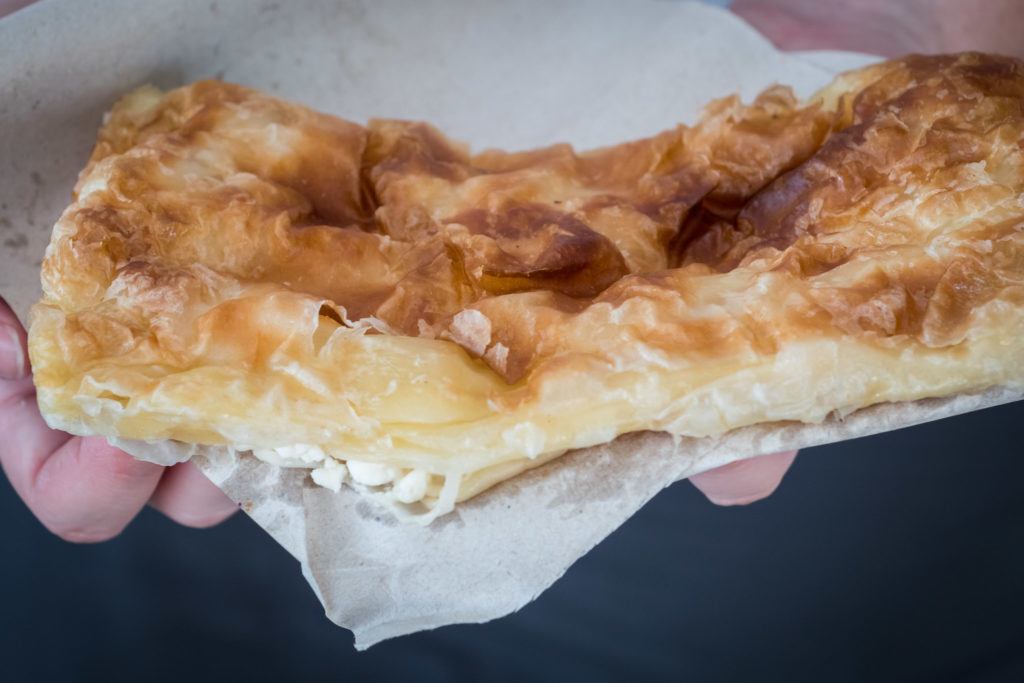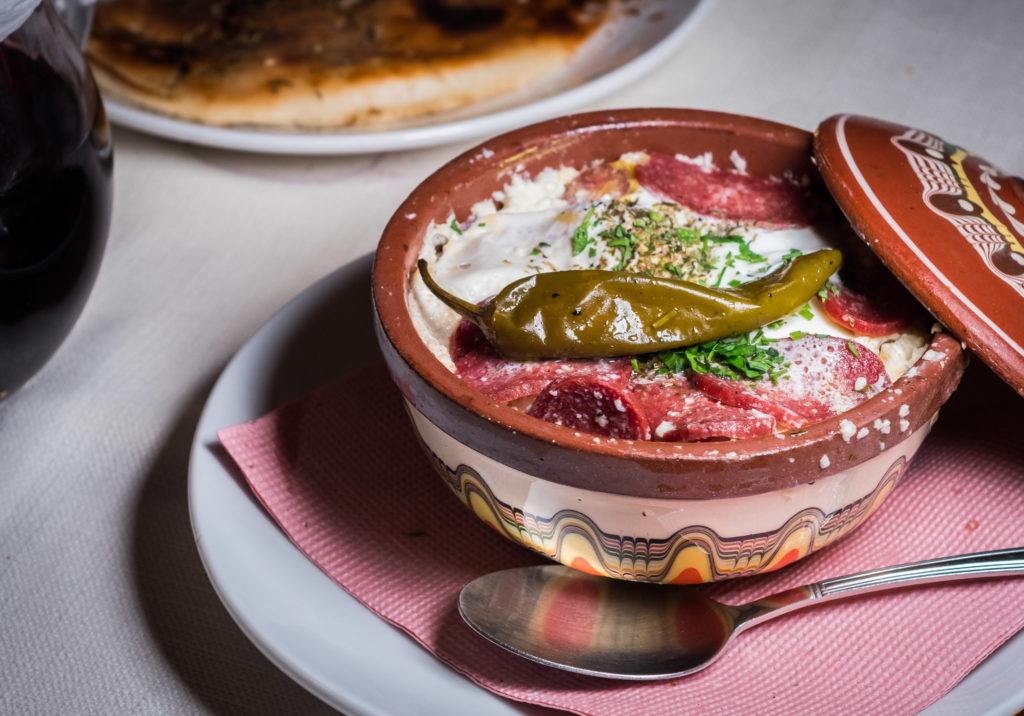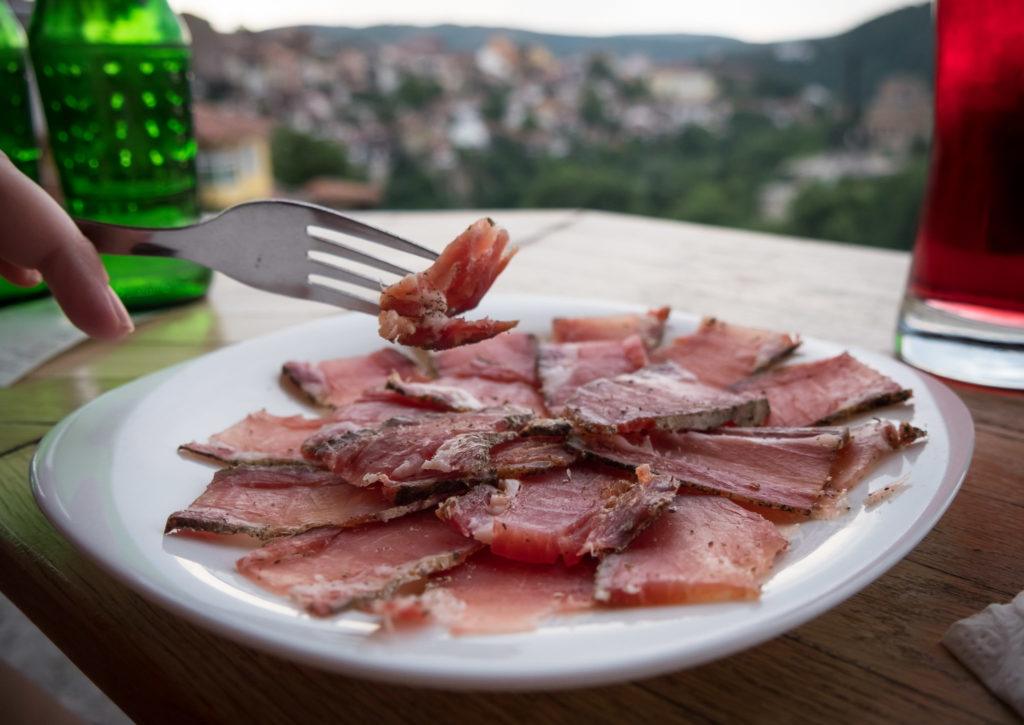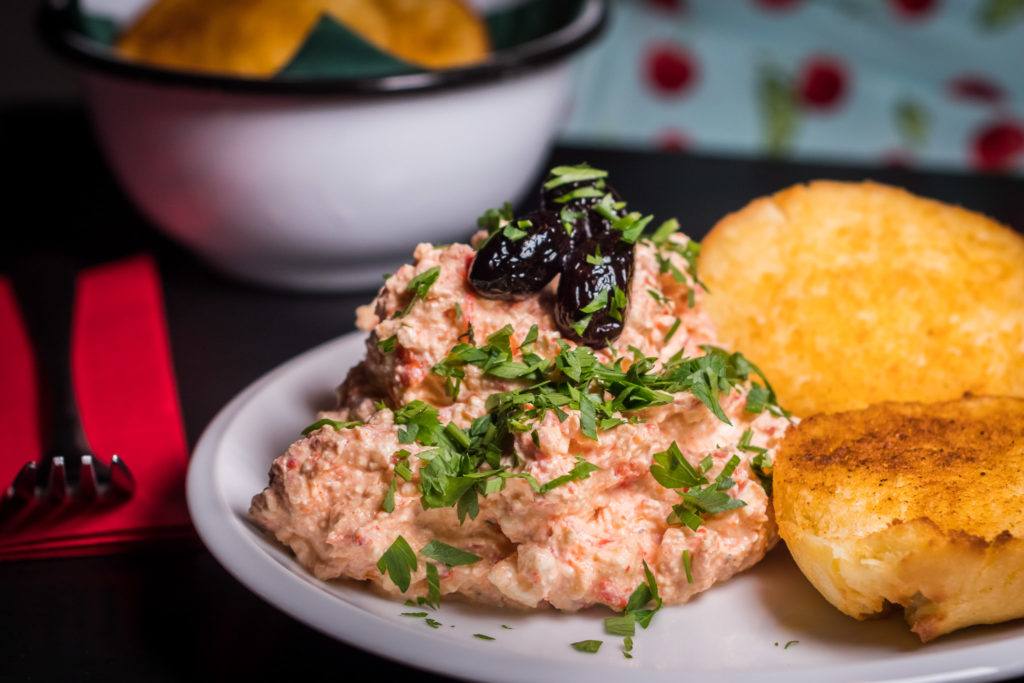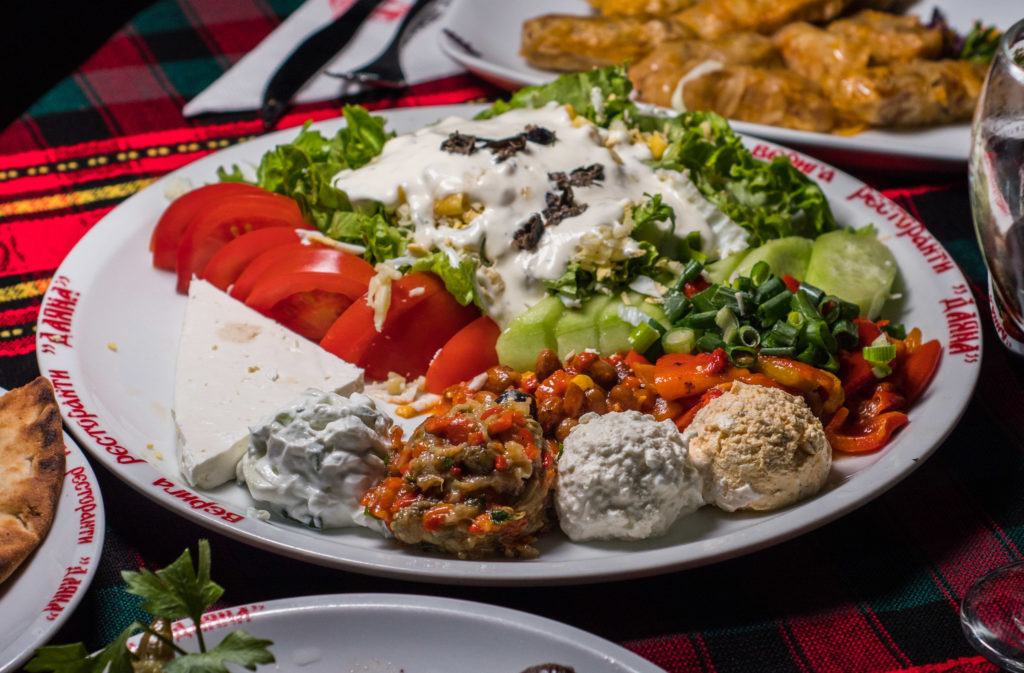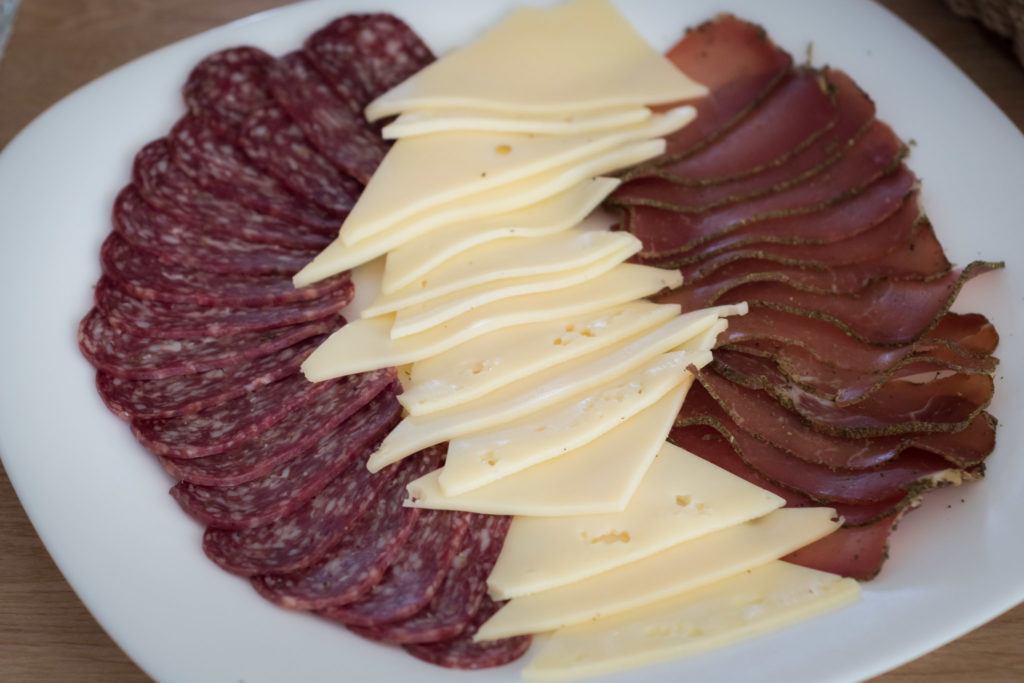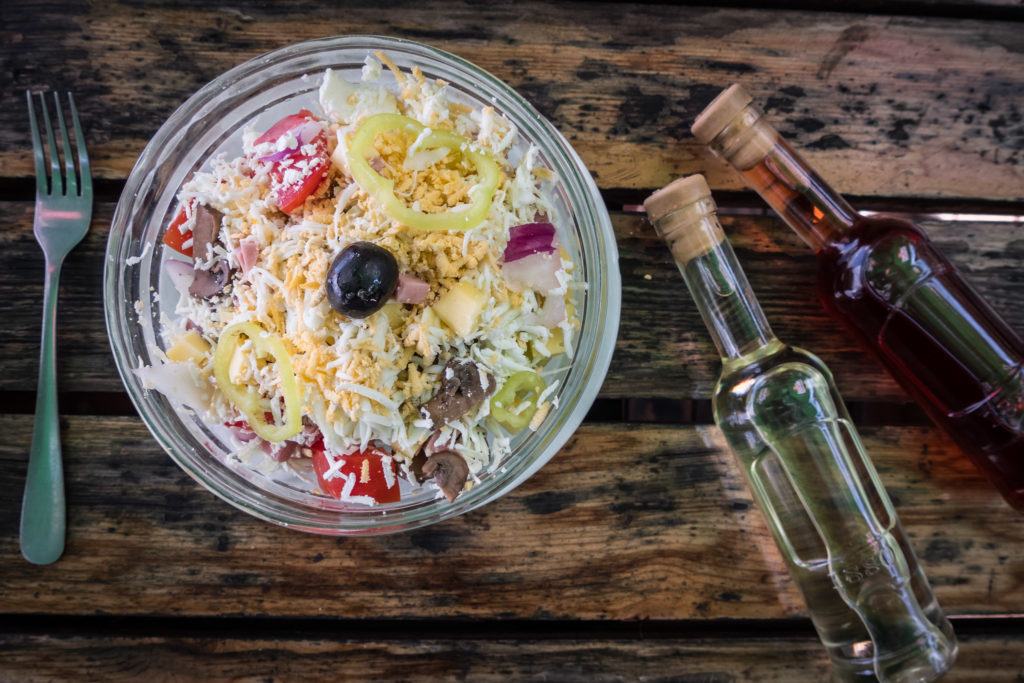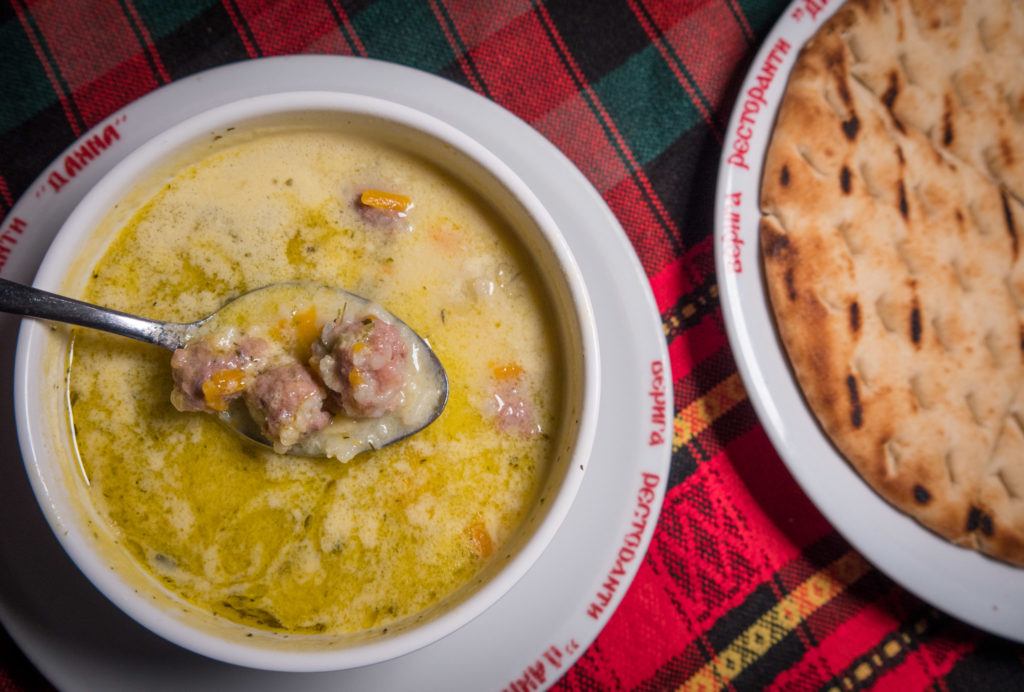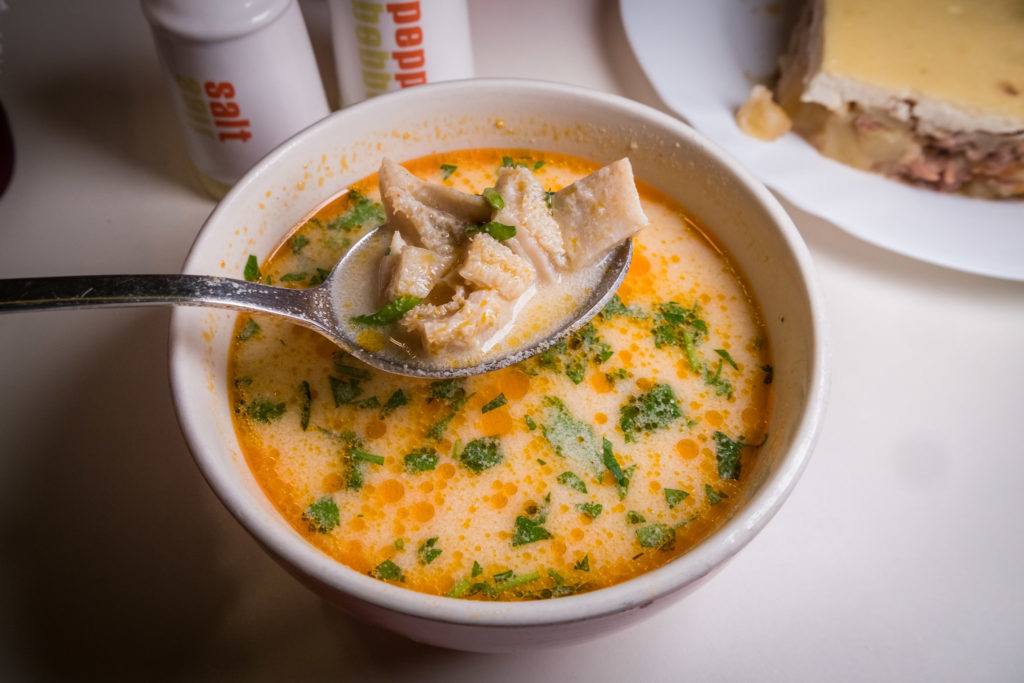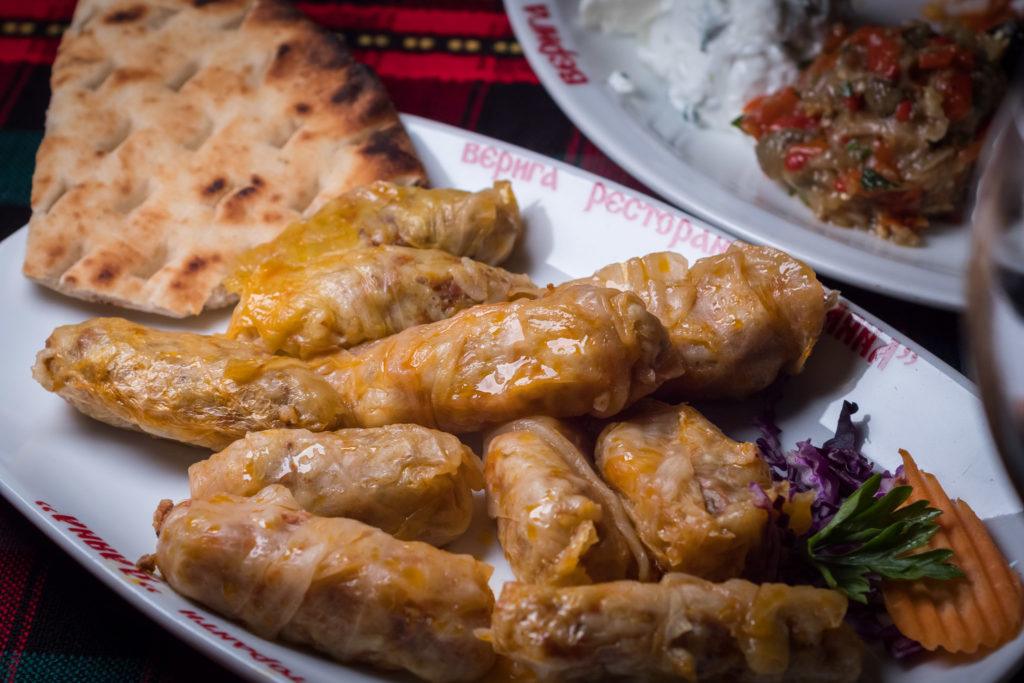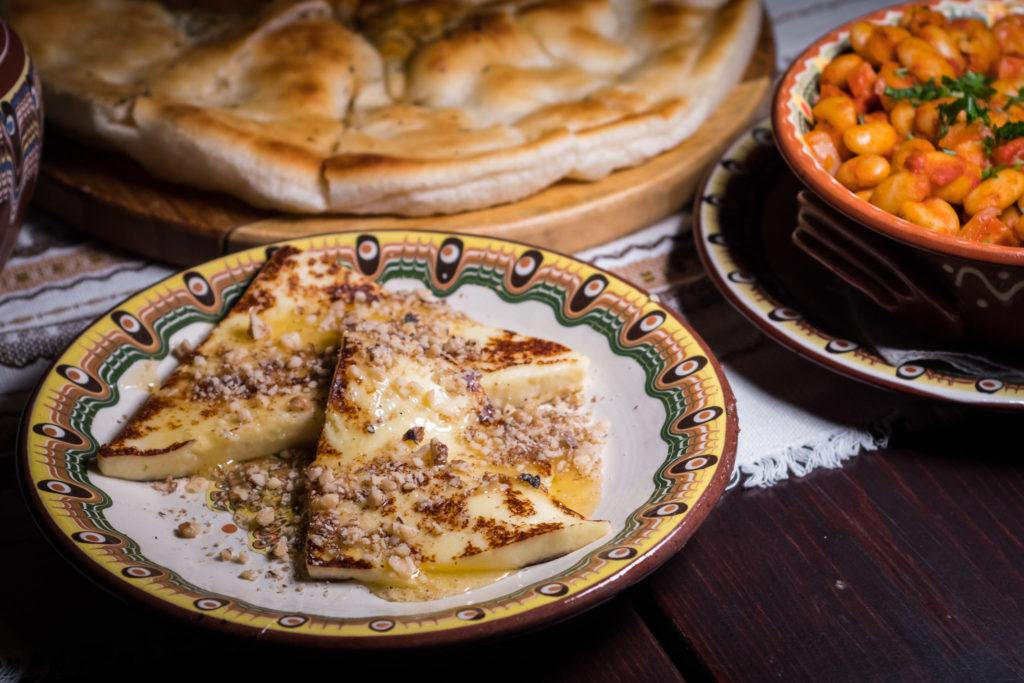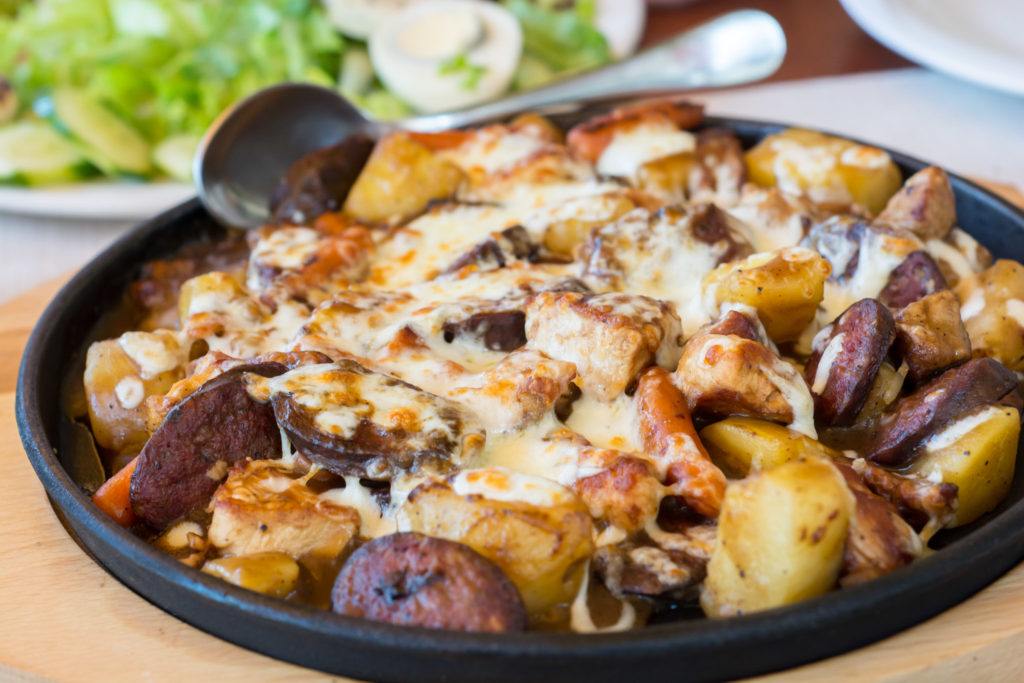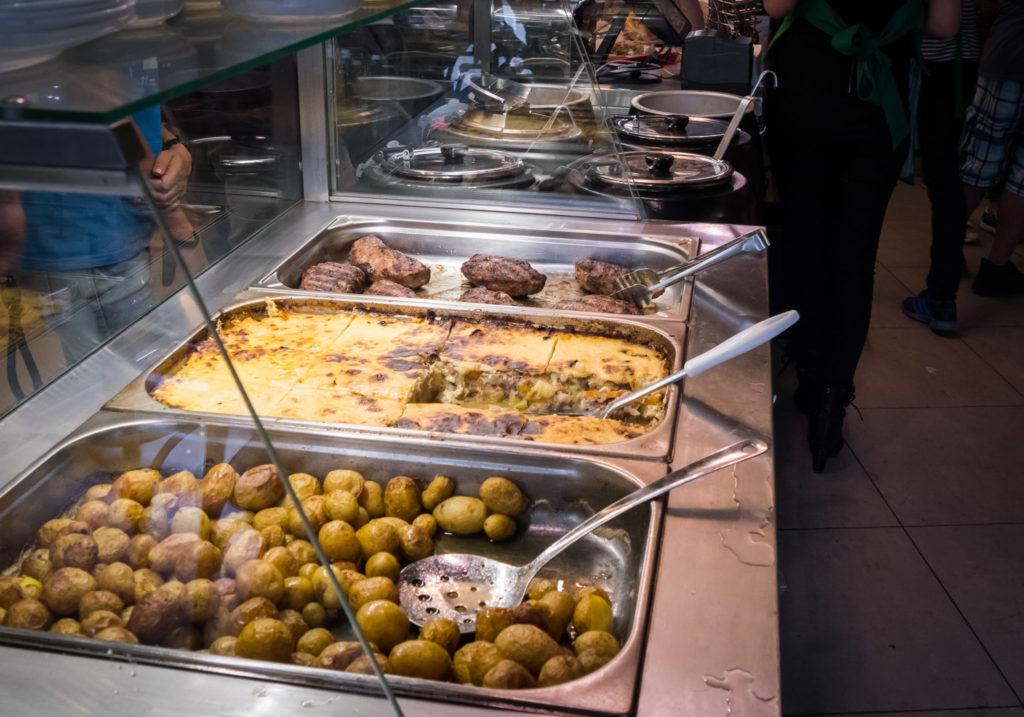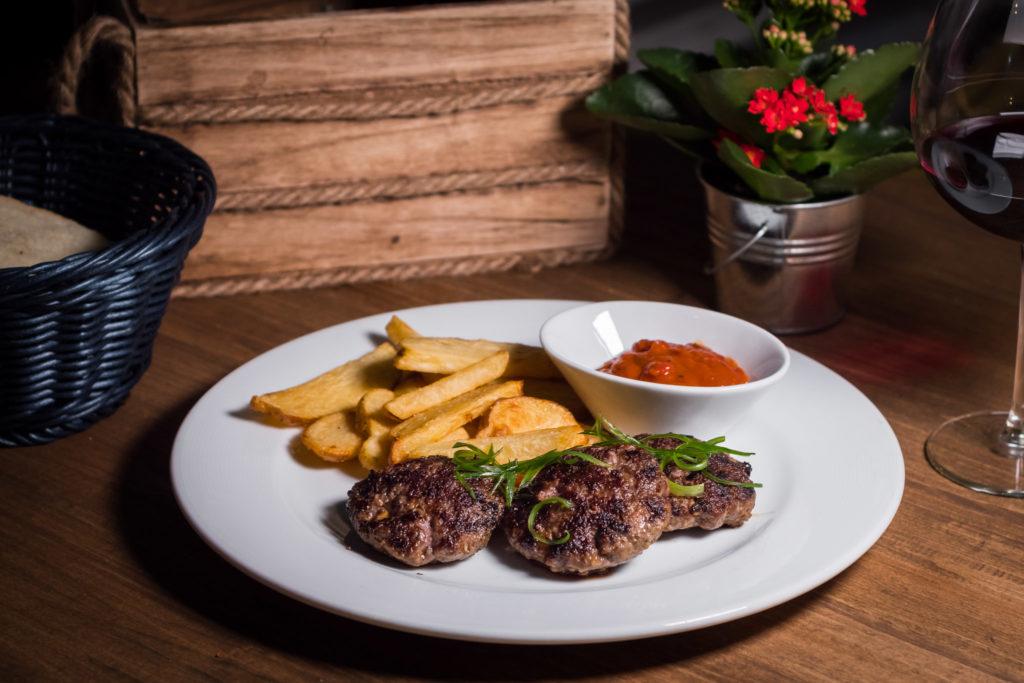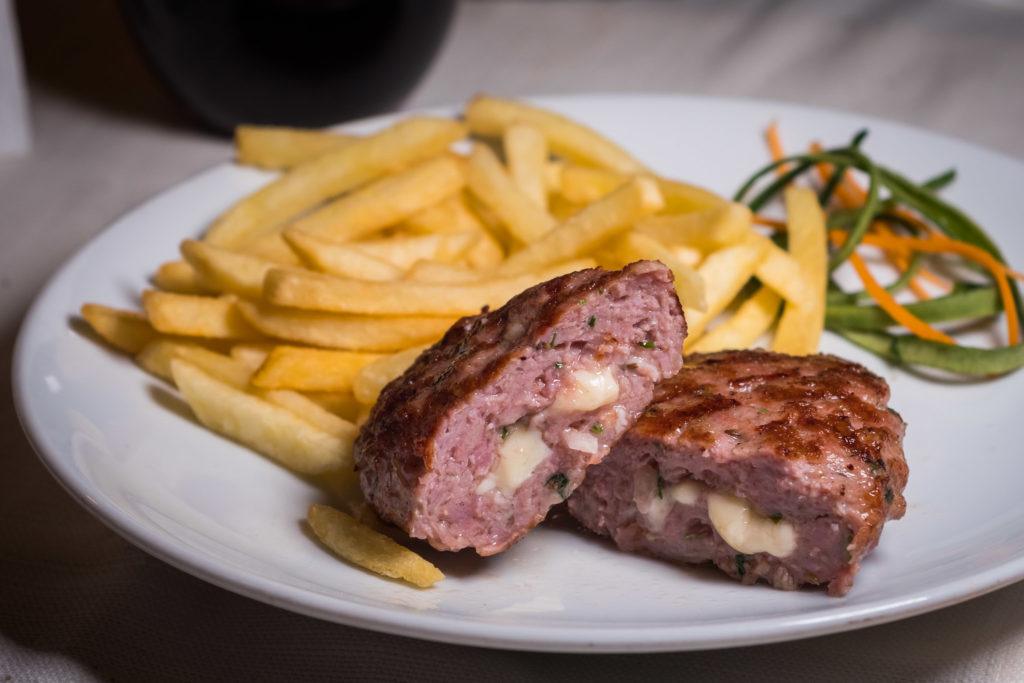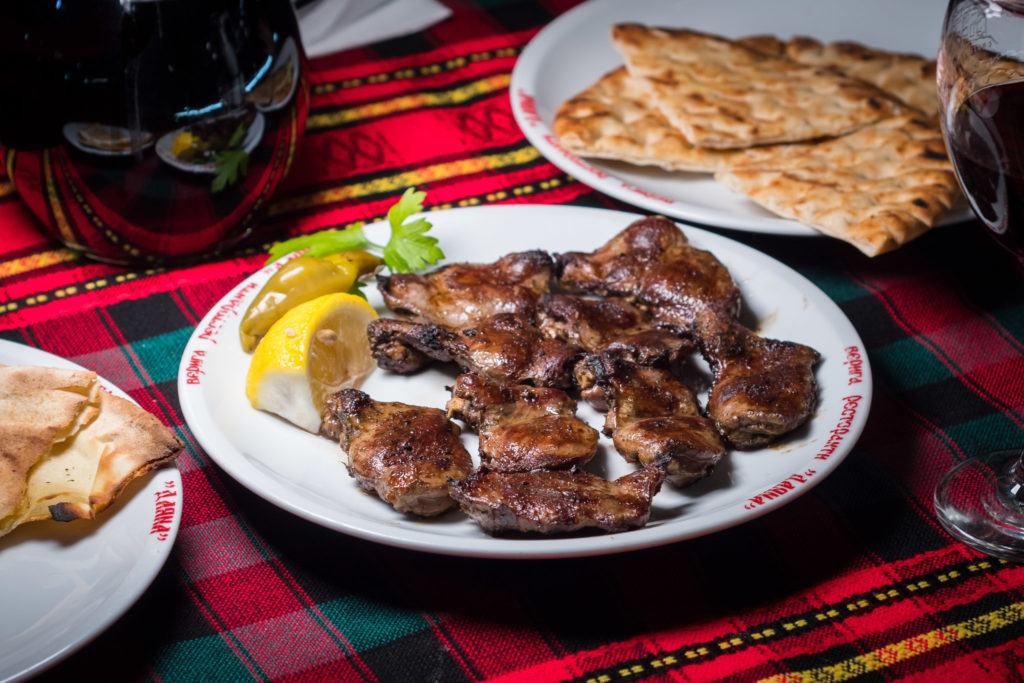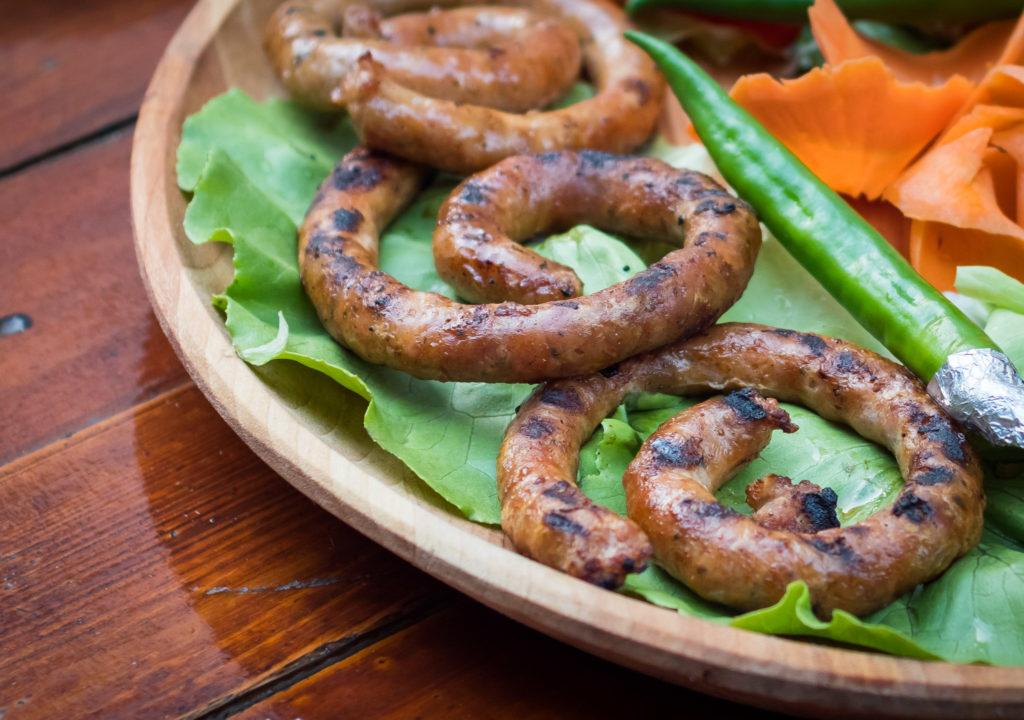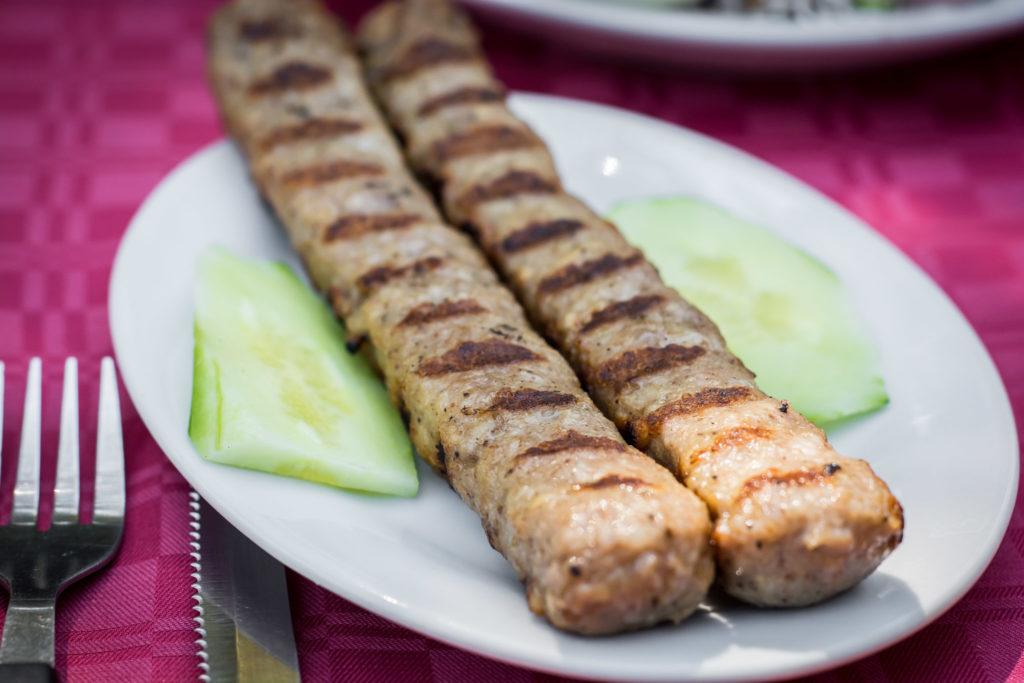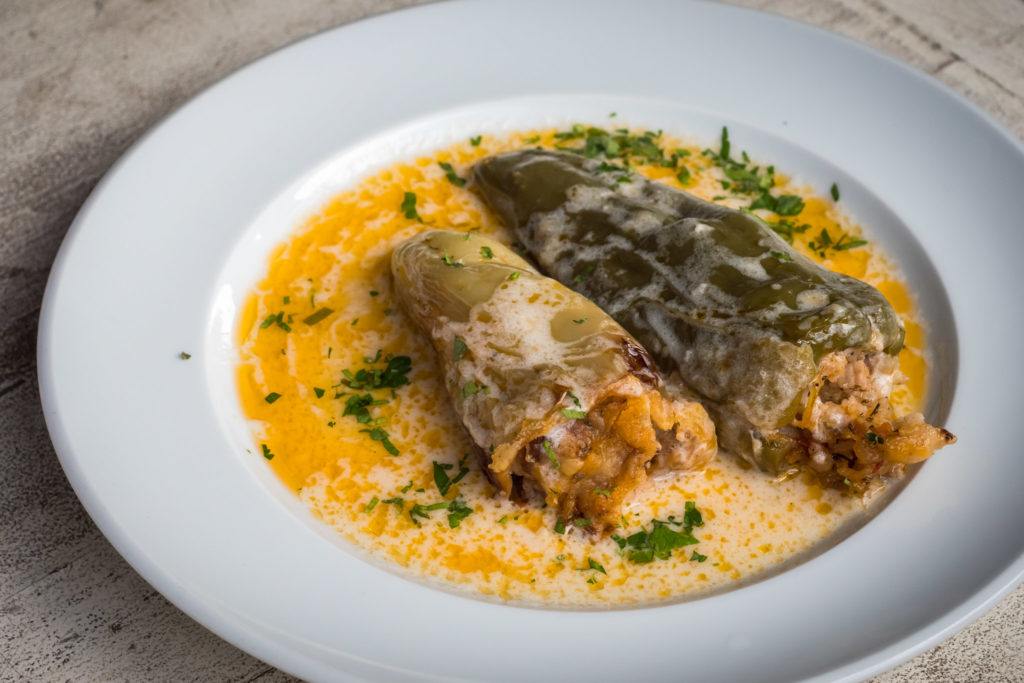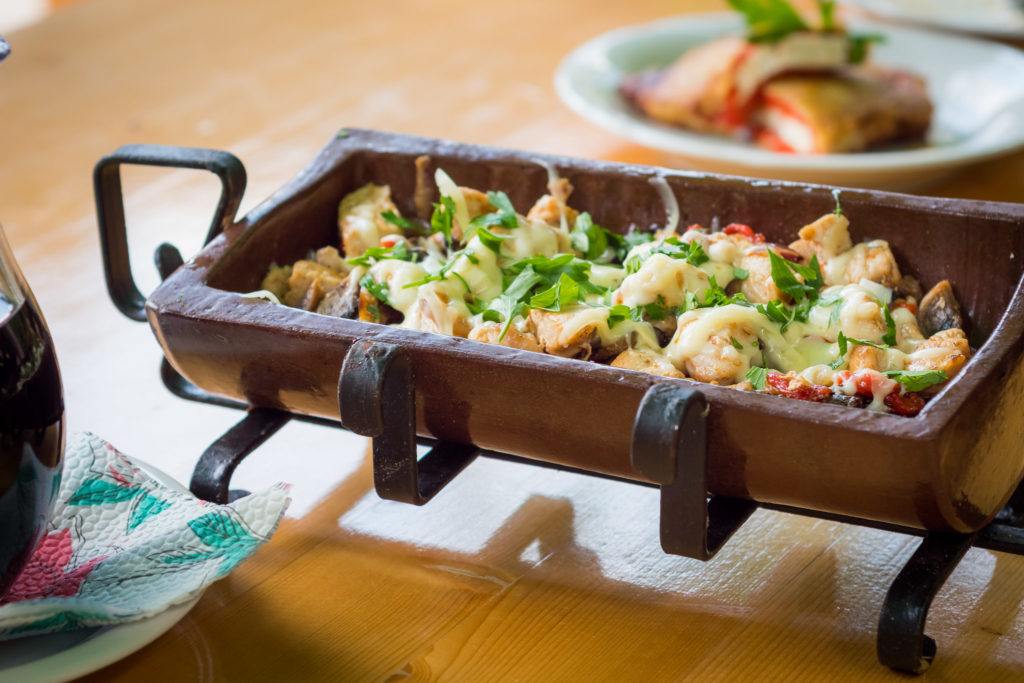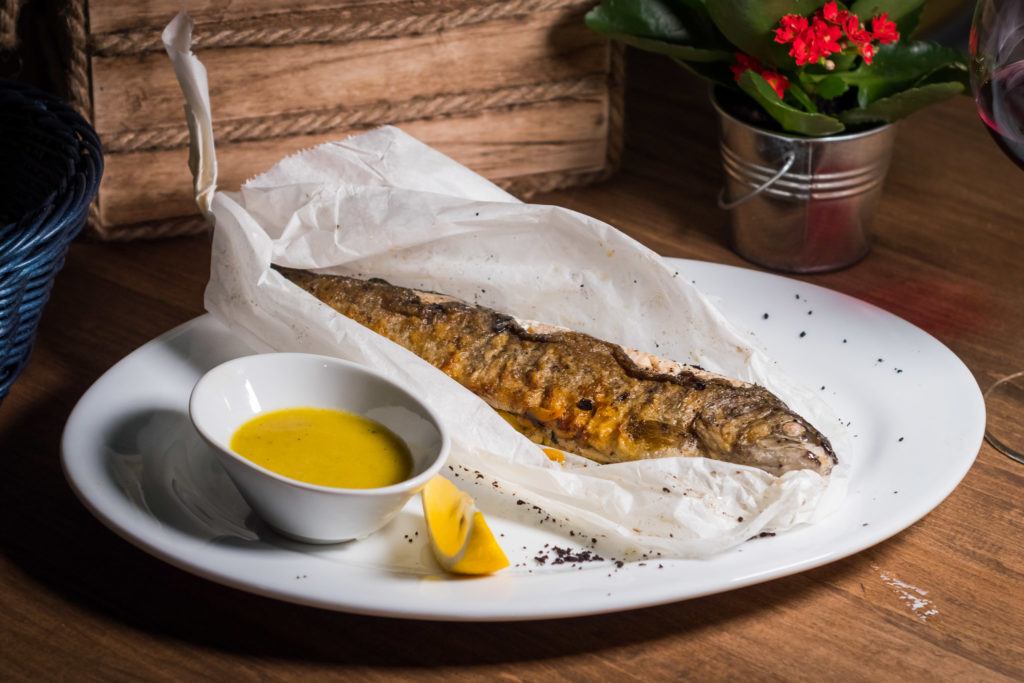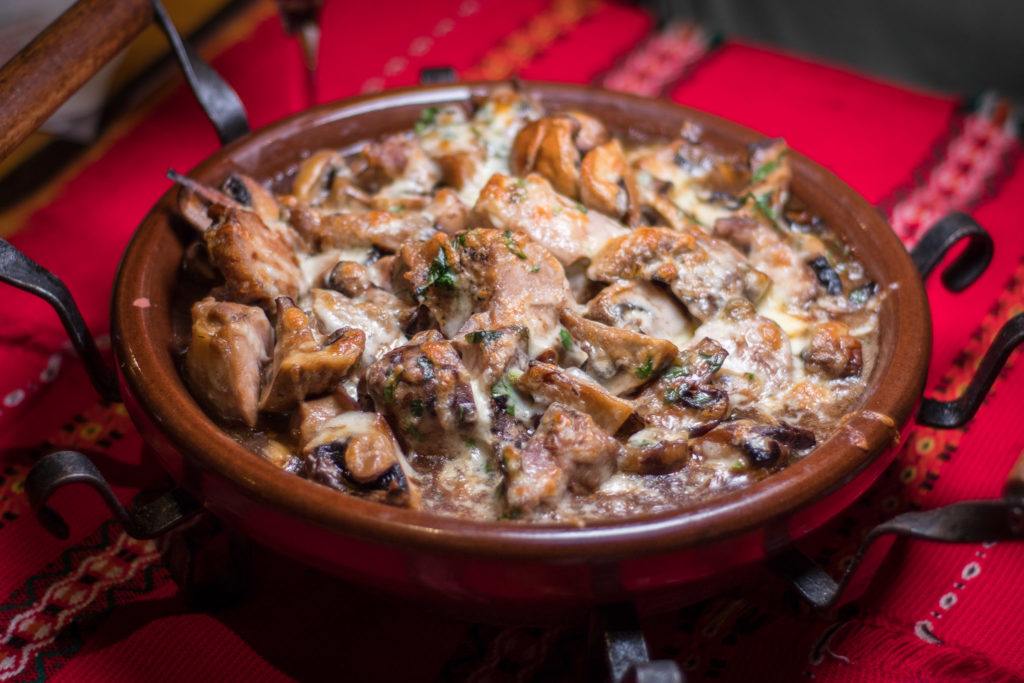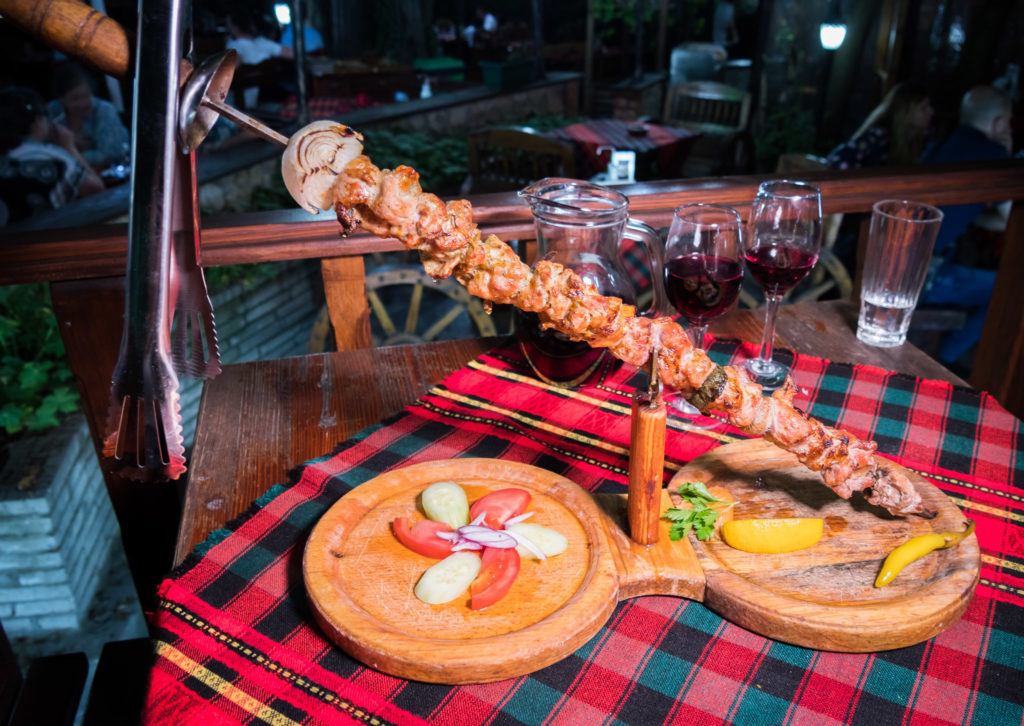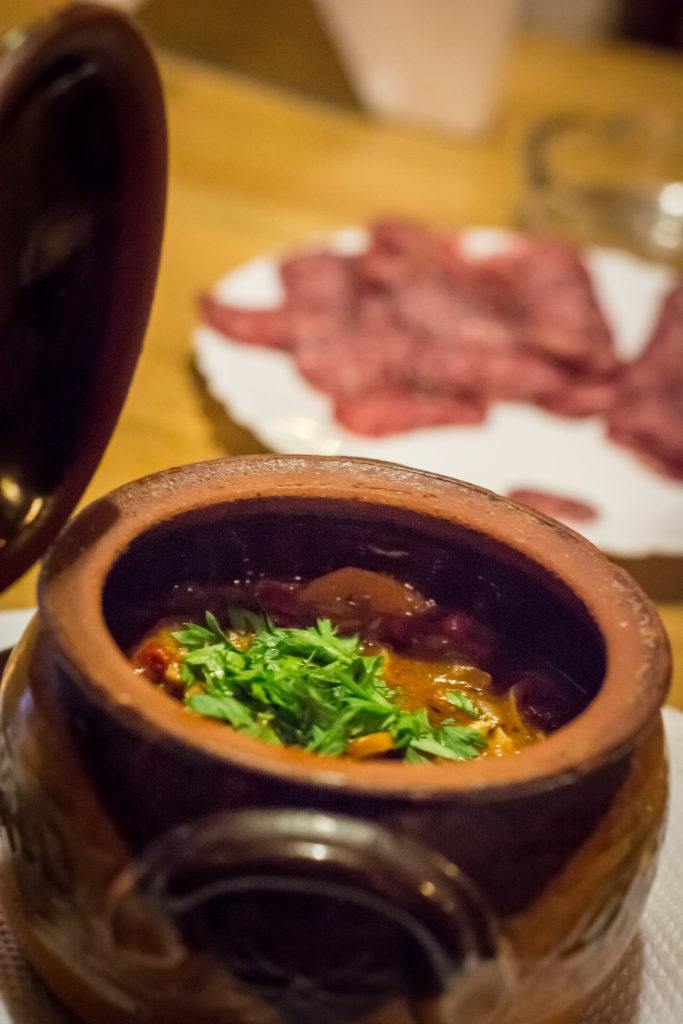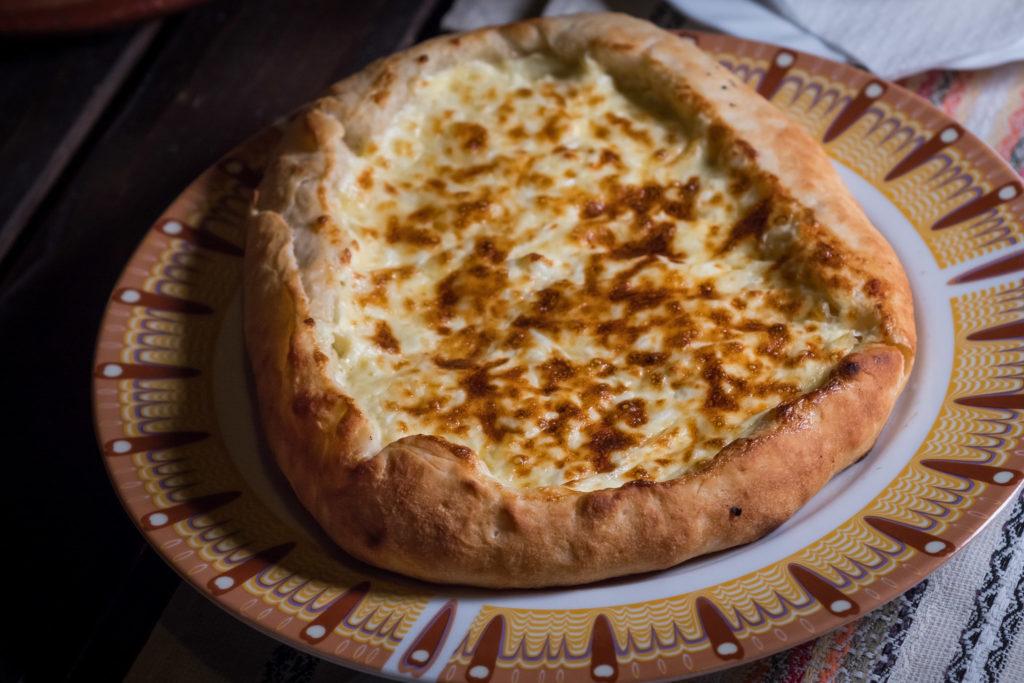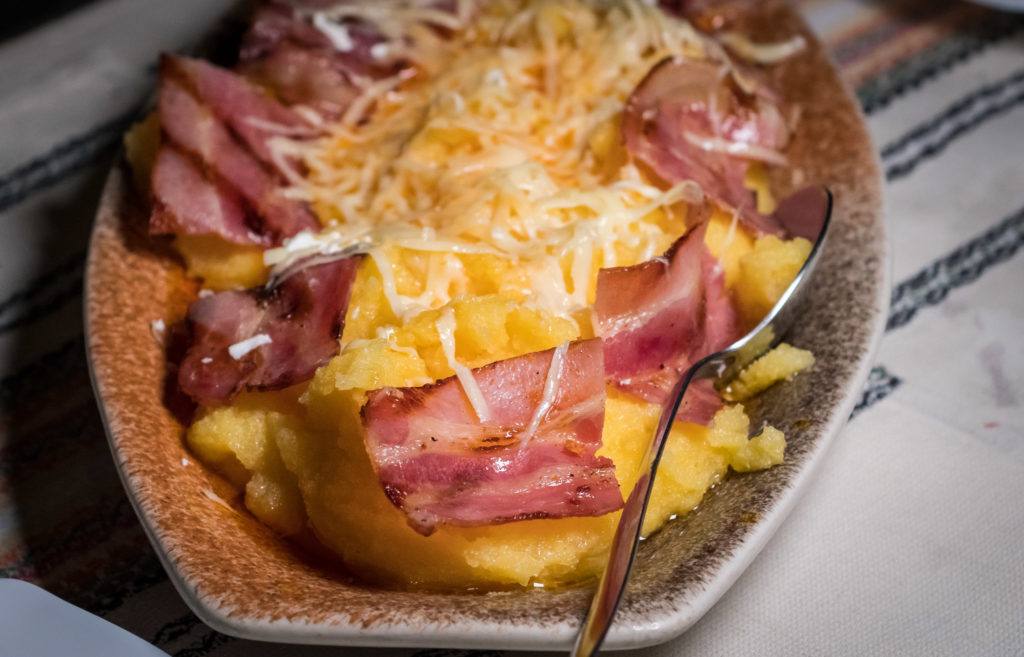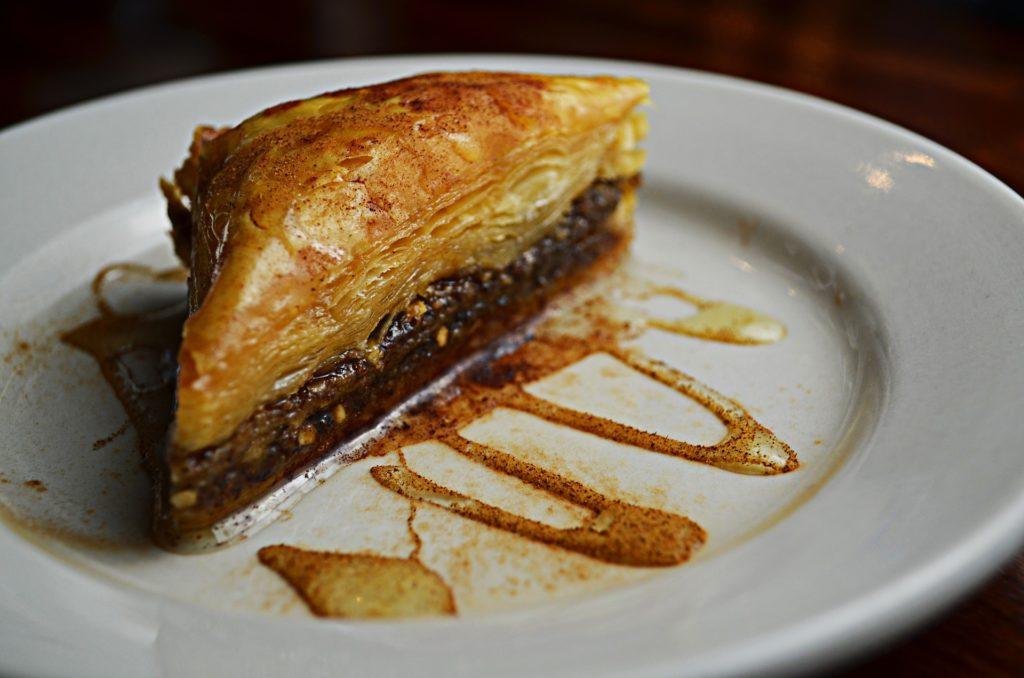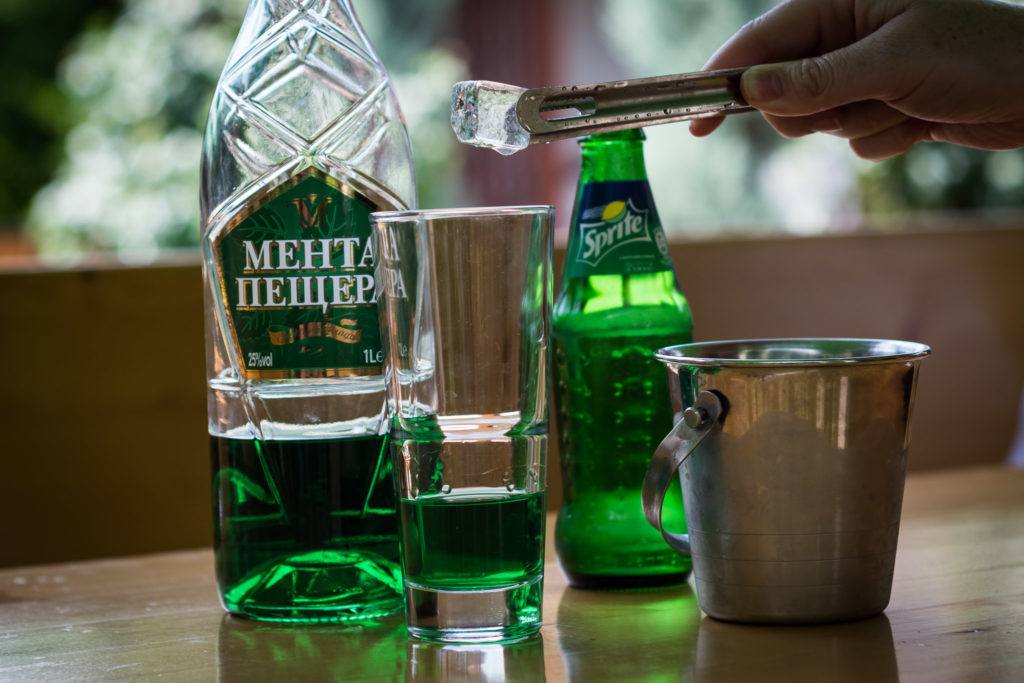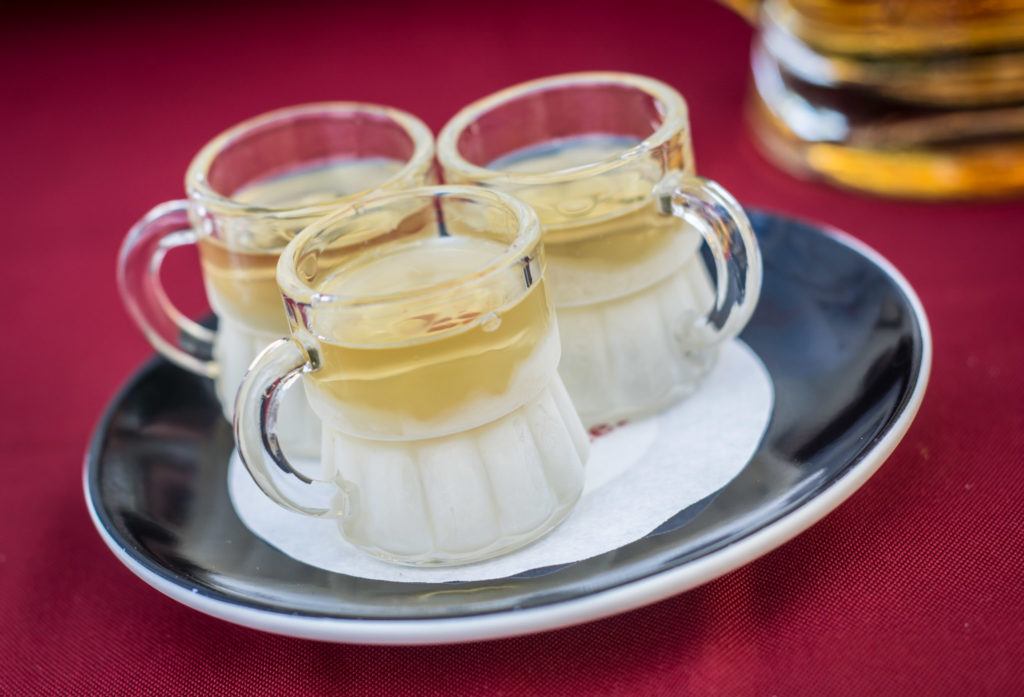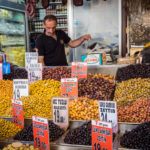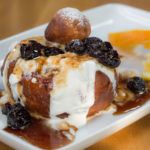Traditional Bulgarian Food: Want to know what to eat in Bulgaria? Or what are the best Bulgarian dishes? This article takes a comprehensive look at typical Bulgarian cuisine, from famous Bulgarian salad (like Shopska Salad) to the Bulgarian national dish, Bulgarian breakfast, Bulgarian cheese and even some of the best Bulgarian alcohol to try.
We’ve visited Bulgaria multiple times in search of Bulgarian traditional food – photographing it, chatting with locals and learning all about the history of the cuisine. Why does Bulgarian Food have such a unique taste? Find out below.
Traditional Bulgarian Food: Table Of ContentsIntroduction To The History Of Traditional Bulgarian Food Traditional Bulgarian Food: Top 5 Must Eats Cold Starters: Dips & Bulgarian Salad Bulgarian Food: Hot Starters, Soups & Snacks Bulgarian Stews (Including Kavarma) Sides, Breads & Other Traditional Bulgarian Food Bulgarian Drinks & Bulgarian Alcohol Food & Drink Tours In Bulgaria (Opens In New Tab) Restaurants, Nightlife & Wine Tour In Plovdiv – Our Review (Opens In New Tab) Disclaimer: This article may contain affiliate links which generate a commission for us if you purchase something through a provider we recommend. Please use our links, rather than searching google, in order to help support our blog so we can keep providing you free content. |
Brief History & Introduction To Traditional Bulgarian Food
Learning about Bulgaria before you go and its background is always a good idea, and food is always tied directly to history. The city of Plovdiv is not only Bulgaria’s oldest continuously inhabited city, but currently is considered Europe’s oldest city, having been lived in for over 6,000 years. So Bulgaria has seen a lot of human history! You can learn Bulgarian via gamification platforms such as Ling, making it easier to immerse yourself in the culture before your visit.
Bulgarian Food is a mix of what grows well locally, especially dairy products and certain herbs and spices we’ll discuss below. Also, dishes influenced by Turkey, as Bulgaria was occupied by the Ottoman empire for some 500 years. You’ll even find elements in Bulgarian food culture going back to 1,500BC when parts of modern day Bulgaria were ruled by the Thracians, a society well known for making wine.
In the 20th century, Bulgaria was enveloped by communism, behind the Iron Curtain. Though industrialization damaged rural tradition, Bulgarian Food continues to hold onto its past into the 21st century, celebrating their delicious culinary history.
Some Essential Ingredients That Make Things Taste “Bulgarian”
The flavor profile of Bulgarian cuisine is produced by frequent use of some very specific local produce.
Common Spices
The unique spice blends of a country often form the basis of many dishes, representing the country as a whole. Some important spices and blends that characterize Bulgarian cuisine include:
Chubritsa (Summer Savoury) – Probably the most defining herb of Bulgaria, simply because it is rarely used in other countries. Chubritsa’s unique herbal character blends well with meats and other dishes.
Sharena Sol – Translates as “colorful salt”. The blend mixes chubritsa, paprika and salt as it’s key ingredients. Some recipes include fenugreek and/or cumin. Sharena salt brightens up meat dishes and more but it’s so good just mixed with a little olive oil and used as a dip for warm bread – a perfect Bulgarian snack.
Dzhodzhen (Spearmint) – Used in stews and soups which contain beans or lentils, also popular to accompany lamb and rice dishes.
Samardala (Bulgarian honey garlic) – A local garlic variety which is dried and salted before being crushed into a powder.
Devesil (Lovage) – A herb that makes fish and soups instantly taste Bulgarian. The flavor sits somewhere between celery and parsley.
Also essential in the Bulgarian spice cabinet are Cumin, Paprika and Fenugreek.
Kiselo Mlyako (Bulgarian Yoghurt)
The history of Yogurt deserves its own article (Which we’ll be releasing later in 2019). In brief, although the exact origin of yogurt is contested, Bulgaria and Turkey (specifically, the nomadic Turkic tribes from central Asia who preceded Turkey) both have strong claims to consider.
But it was a Bulgarian scientist, in 1905, that first identified the essential lactose eating bacteria (L. Bulgaricus) that leads milk to become yogurt.
Kiselo mlyako means “sour milk”. The thick and slightly sour Bulgarian yogurt is used in much traditional Bulgarian food and brings a unique flavor to Bulgarian cuisine.
Sirene – Bulgarian Cheese (Salty White Cheese)
Another essential dairy product is Sirene. This Bulgarian cheese is similar to Greek feta cheese, in that it is a salty white brined cheese. However, some Bulgarians contend that sirene is the original, or at least better version, of Greek feta cheese.. This is another topic that needs a longer investigation – coming soon.
Suffice to say, sirene brings a salty yet creamy taste to so much Traditional Bulgarian Food. It’s used in many of their most famous dishes. It’s almost more like a condiment or seasoning as it is used to pervasively throughout the cuisine.
Bulgarian Traditional Food: Top 5 Must Eats
If you are on a short trip and only have time to briefly enjoy the food highlights of Bulgarian food, this top 5 features some of the most popular iconic dishes as well as my personal favorites.
Bulgarian National Dish 1: Shopska Salad
Shopska salad makes use of the salad combo seen in so many salads in Europe and the Middle East: Tomato, cucumber, bell peppers, and onions. It focuses on the use of local ingredients that grow in Bulgaria. But what makes it uniquely Bulgarian is the addition of Sirene cheese. As Bulgaria is not a big olive oil producer, sunflower oil is more typical. Also in the dressing, red wine vinegar, salt, and pepper. A simple and refreshing summer classic.
You’d think a salad this simple had been around for hundreds of years… You’d be very wrong. Even though salad is plentiful and popular in Bulgarian cuisine today, historians believe that it was barely eaten at all until the 20th century. Furthermore, the Shopska salad appears to have been invented or adopted in the 1950s and ’60s by chefs at “BalkanTourist”, the state run tourism agency at the time, as a way to promote tourism to Bulgaria.
Apparently, other national salads were also created, each named after a region of Bulgaria, but Shopska salad (named after the Shopluk region) eventually won out over the years as the most popular Bulgarian salad. Today you’ll find Shopska on almost every restaurant menu.
The colors of the salad are said to represent the colors of the Bulgarian flag – Red, white and green. Giving it an even more nationalistic tone.
Bulgarian National Dish 2: Banitsa
In its most traditional form, Banitsa is a phyllo dough pastry filled with layers of egg and sirene cheese mixed together. But banitsa is made with many different fillings, including typical savory fillings like spinach or cabbage and at Christmas, pumpkin. It can also be made sweetened.
It’s most popular as a Bulgarian breakfast food, served with a glass of ayran (salty yogurt drink) but is also eaten as a snack or for some special holidays. Banitsa’s prolific existence within Bulgarian food culture may be one reason it is also a Bulgarian national dish. Similar layered phyllo dough dishes exist all around the Balkan region.
It’s said that in times gone by, mothers would choose a wife for their sons based on the woman’s banitsa making skills. Today, you don’t have to get married to enjoy some Banitsa – you’ll find it in bakeries, restaurants and bus station kiosks country-wide!
Bulgarian Cuisine: Gyuveche
Gyuveche is one of the most popular Bulgarian dishes but also one with the most variety. Recipes vary wildly and, in home kitchens, the dish is quite often prepared with whatever the cook has left that day. It’s normally prepared in a small pot (of the same name) as individual servings.
The base ingredient should be eggs whisked with sirene cheese – though I’ve actually seen recipes that don’t even have this. The cheesy mix may go on top, or be mixed with, various veg and meat – depending on who’s making it and the region you are in. Then it is topped with some additional ingredients of choice.
My favorite was at Restaurant Old Plovdiv where it includes lukanka (a cured Bulgarian sausage) and chili. This was described as “Thracian style”, referring to the region, though its best to ask your server exactly what ingredients you are going to get to avoid disappointment.
Elena Fillet
Elena Fillet is cured/dried pork loin coated in pepper and the very Bulgarian chubritsa herb. While cured pork may be on the menu in countries all over the world, it’s the herb coating that makes this a unique Bulgarian food to try. We were told by a tour guide that Elena Fillet is a DOP (Origin protected) product of Bulgaria – though I have not been able to confirm this.
Bulgarian Traditional Food: Katak
Katak dip is fermented katak curd (though Bulgarian yoghurt often substitutes) that is mixed with sirene cheese, roasted peppers and garlic to make a king of Bulgarian snacks.
Bulgaria has so many dips to choose from. We’ll go into more of them in the Bulgarian Salad section below. Katak was our top pick.
We saw katak on many Bulgarian menus but the version at Pavaj in Plovdiv was killer. Reservations essential.
Bulgarian Food Podcasts
Part 1
- The foundations of traditional Bulgarian cuisine – the flavors that make their dishes taste uniquely Bulgarian
- The history of Bulgaria’s National Dish: The Shopska salad
- Plus, The best soups, salads and dip in Bulgarian cuisine
Part 2
- Bulgaria’s National Pastry – Banitsa
- We chat to Vasil From Bulgaria Wine tours about some very traditional Bulgarian main courses
- A 100% Bulgarian dish from the Rhodope mountains.
- PLUS, Megsy’s favourite Bulgarian drink – but should you be mixing it with milk?
Subscribe free and get more episodes of The Dish every week:
Listen & Subscribe: iTunes | Spotify | Google Play | Stitcher
RSS: https://feeds.captivate.fm/thedish/
Support: Become a Patron | Tweet: @foodfuntravel | Email: [email protected]
Cold Starters: Dips & Bulgarian Salad
Already mentioned in our Top 5 above:
- Shopska Salad
- Elena Filet
- Katak
Popular Bulgarian Salad Dips
There are lots of great dips to choose from. Sometimes both the salads and the dips are called salads on the menu.
Lyutenitsa: Sort of like a relish made with grilled tomatoes, garlic, and peppers. Other ingredients may include carrots, eggplant, onions.
Kiopoulu: An eggplant puree with tomatoes and garlic
Snezhanka (Snow-white): A yoghurt based dip with cucumbers, walnuts, garlic, and dill, sometimes decorated with black olives.
Katak: Yogurt & sirene cheese mixed with roasted peppers.
Typical Bulgarian Sausage & Cold Cuts
Bulgarians have a lot of sausages, and a few other cold cuts too. Here are some of the most popular.
Lukanka: A semi-dry Bulgarian salami from pork, veal, and spices with a distinguishable flattened shape.
Kashkaval: A yellow mild cheese, popular all over the Balkans. Similar to mild cheddar cheese.
Pastirma: An air-dried, cured beef with some similarity to Italian bresaola. More popular in Turkey and Armenia.
Sudzhuk: Dry and spicy flat pork & beef sausage. Spiced with cumin, sumac, garlic, salt, and red pepper.
Nadenitsa: A dry-cured beef & pork sausage.
Banski Starets Sausage: Dry-cured pork sausage flavored with cumin, paprika, black pepper, and other spices. From the Bansko region in the Rila Mountains.
Fillet Elena & Bulgarian white sirene cheese (mentioned earlier) are also popular cold cuts.
Bulgur Wheat & Tomato Salad
This salad is like Bulgarian Tabbouleh mixed with sirene cheese. Don’t be confused by the name, bulgur wheat originates from the middle east, not from Bulgaria, but this spin on tabbouleh really impressed us (tried at Pod Lipite, Sofia).
More Bulgarian Salad Options
Bulgaria is one of the few countries in the world we get truly excited to visit because of salad. So many to choose from. It’s like we can eat out every day without overeating – though overeating still happens quite a lot anyway… We already mentioned the Shopska salad and Bulgarian tabbouleh. Here are some other salads to look out for:
Ovcharska salata – Shepherd’s salad (Pictured): tomatoes, cucumbers, peppers, onion, mushrooms, ham, boiled egg, and white cheese. Second to the Shopska salad on most menus.
Kalugerska salata: boiled haricot beans, gherkin, onion, chutney from roasted red pepper and tomatoes, olives
Starosofiska salata: roasted marinated red pepper, white cheese, walnuts, olive oil, garlic, and dill
Turshiya – Pickled Salad: Pickled vegetables, such as celery, beets, cauliflower, and cabbage, popular in winter. Variations are selska turshiya (country pickle) and tsarska turshiya (king’s pickles).
Tarator
A cold soup made with watered down Bulgarian yoghurt as the base. Flavored with cucumbers, walnuts, garlic, dill, salt, pepper, vinegar, and oil. It’s everywhere in the summer, harder to find the rest of the year. Locals go crazy for this Bulgarian traditional food.
Bulgarian Traditional Food: Hot Starters, Soups & Snacks
Already mentioned in Top 5 above:
- Banitsa
Supa Topcheta (balls soup)
A buttery wonderland of a soup containing small pork meatballs and some vegetables. Definitely our top pick for Bulgarian soups. This version tried at Dayana-3 in Plovdiv. Most bad reviews on TripAdvisor were for the service, which I admit was hit and miss. Food was all good.
Shkembe (Tripe Soup) & Other Soups
Shkembe (Tripe Soup) is popular throughout the Balkans and is considered to be a hangover cure. It’s tripe cooked in milk and beef stock and normally involves a lot of butter, which could be doing more for the hangover than the tripe… Vinegar balances out the fat and salt. Another element for the hangover cure is you are supposed to pair it with rakia (Bulgarian alcohol – brandy)
Bob chorba (Beans Soup) – Bulgaria has plenty of beans to choose from and they actually make quite a few different beans soups. The most popular is bob chobra, which has beans in a tomato based broth, normally flavored with spearmint. Other varieties may be boiled with a ham hock or other meat and veg.
Chicken Soup Or Beef Soup – Bulgarian Style rich meat soups.
Teleshko vareno (veal soup) – Chunky pieces of potato, carrot, and onions boiled with veal.
Pacha (sour lamb’s-trotter soup) – Lamb’s trotters are boiled with pickles or vinegar or both.
Zelenchukova supa – A vegetable soup with lots of herbs like parsley, celery leaves, Chubritsa etc.
Gubena supa – A forest mushroom/boletus soup
Ribena chorba – fish soup made with thyme & fresh lovage
Kashkaval Pane
Yellow kashkaval cheese is breaded and deep fried. This may be served just as is – because what else do you need with deep fried cheese? A slightly less Bulgarian version that we enjoyed was at Hadji Nikoli in Veliko Tarnovo – which came with cranberry compote and orange pieces.
Chushki Burek (Чушки Бурек)
Not to be confused with Bourek (A Balkan pastry similar to Banitsa). Chushki Burek is bell pepper stuffed with sirene cheese and deep fried with an egg coating.
Zelevi Sarmi & Lozovi Sarmi
Zelevi Sarmi are cabbage rolls – filled with minced pork and rice. They are popular all over the Balkans. They are considered a national dish in Romanian Cuisine, where they are called sarmale. The Lozovi Sarmi are the same concept but rolled in a vine leaf, not cabbage.
Grilled Kashkaval Cheese With Honey & Walnuts
Take kashkaval cheese, grill it on the hot plate, smother it in honey and ground walnuts. Enough said.
Bulgarian Food: Meats, Fish & Baked/Grilled/Stewed Mains
Already mentioned in Top 5 Above:
- Gyuveche
Sach
The word “sach” refers to the clay dish the food is served on. The food is cooked on the dish and it comes out searingly hot and keeps the food warm for ages. The ingredients thrown on the sach can really include anything! Pictured, a sach with potatoes, Bulgarian sausage, chicken and plenty of melty cheese.
Bulgarian Moussaka
Who invented the Moussaka? Turkey, Bulgaria, and Greece all claim to have invented the dish. We intend to do some full research into this complicated origin story in the future. For now, what you need to know is, eat it! Bulgarian moussaka, unlike Greek, is focused on the potato and meat and typically does not include a layer of eggplant.
Kyufte – Bulgarian Meatballs
Kyufte is another dish that is contested to be of Turkish origin (kofte). It’s juicy Bulgarian meatballs.
Kyufte Stuffed With Cheese
The only way to make kyufte better… stuff it with oozy yellow cheese. I don’t know how they make them so juicy.
Tongue In Butter
Simple but perfect. There’s nothing like frying something in butter to make it better. Even better when the tongue goes just a little crispy on the outside, without drying out on the inside.
Duck Hearts
A big old plate of duck hearts. This seems to be a favourite meaty course in Plovdiv. Great with a glass of red Bulgarian wine.
Karnache
Karnache is a spiral sausage normally made from fresh pork, sometimes lamb, in a sheep casing.
Kebapche
Kebapche is the caseless minced meat kebab of the Balkans. It’s actually the national dish of Bosnia Herzegovina, where each kebab is small. In Bosnia, it is made from beef, but in Bulgaria expect a long kebab of pork or a pork/beef mix.
Stuffed Peppers / пълнени чушки (pŭlneni chushki)
Peppers stuffed with meat and rice – similar to Turkish dolma. Once peppers arrived in Europe from the Americas, it was only a matter of time before someone in the Balkans stuffed rice and meat in them.
Keremida
Bulgarians love naming dishes after the thing they are cooked in. The word “Keremida” refers to a roofing tile. Similar to sach (above) meat/veg/cheese is cooked in the tile. This is certainly not the most common dish. We tracked it down at Anita restaurant, spa & guest house in a small village south of Plovdiv.
Grilled Trout
Aside from on the Black Sea coast, the most common fish on the menu in Bulgaria is Trout. Grilling with lovage as the herb seasoning is the classic way.
Potatnik / Patatnik
Patatnik is a potato pie cooked in the Sach or sometimes another clay dish, in an oven or heated from below. Get ready for buttery indulgence. This baked mash is laced with bubbling fat and mixed with onions and Bulgarian spearmint. The dish originates from the Rhodope Mountains, south of Plovdiv on the way to the Greek border. The original dish, in it’s simplest form, doesn’t have egg or cheese mixed into the mash but that seems to have become a popular choice in restaurants – which is no surprise because it’s awesome.
This regional dish was until recently only available in the mountains but is now being seen on some restaurant menus in Plovdiv and elsewhere. Eaten at Rahat Tepe, Plovdiv.
Katino Meze
Katino Meze is a meat in gravy dish, normally with chopped pork and onions – traditionally served in a copper pan, though the version we got in Sofia was an obviously lazy presentation – just using the Sach. Sometimes it’s spiced up with hot pepper. Without cheese is more traditional but what can I say, we like cheese…
Shishche / Shashlik
Marinated meat, grilled on a skewer.
Kavarma / Kapama
Kavarma is a slow cooked stew with a choice of meat, onions, and spices – normally with chubritsa too. It’s supposed to be baked in the traditional gyuvech clay pot but some restaurants speed things up by pan cooking it and just serving it in the pot – or just on a plate.
Fancy versions may feature multiple types of meat (pork, chicken, lamb, rabbit, veal, and sausage), and have other ingredients added like sauerkraut, dried plums and spices, and red or white wine. Some say this version is called kapama rather than kavarma but we were unable to track down kapama.
Zelen Fasul – Green Beans Stew
A traditional Bulgarian Food that is typically Bulgarianized with all the essential herbs: spearmint, chubritsa.
Sides, Breads & Other Traditional Bulgarian Food
Some additions to accompany your mains…
Bulgarian Breads: Pita & Palenka
Bulgarian pita bread is sometimes called Greek bread on menus, it’s one of the few dishes Bulgaria freely attributes to Greece, it seems. However, they sometimes choose to take pita to the next level by filling it with a cheesey-egg mix (pictured).
Palenka is also called Arabic Bread on some menus and is a thin flatbread.
Kachamak (Polenta With Cheese, Sometimes Bacon)
Polenta mixed with white cheese and butter is a favorite through Bulgaria and Romania / Moldova – where it is called Mamaliga. We discussed it in our Romania food podcast and we believe it came to Bulgaria from Romania, not the other way around. That said, the Bulgarian version with sirene cheese is always a winner too.
Drob sarma
A rice dish which is typically mixed with chopped offal and Bulgarian spice, sometimes with mushrooms. Good as a side but sometimes served as a main.
Bulgarian Breakfast
Already Mentioned in Top 5 above:
- Banitsa – Bulgaria’s national cheese pastry. A perfect Bulgarian breakfast as well as an anytime snack!
Other Bulgarian Breakfast Choices:
Popara – A cheeky little Bulgarian breakfast that resembles a quick bread pudding. Chopped bread, milk, butter, sugar (optional) and the most important ingredient, Sirene (white cheese).
Princesses – A variety of things on toast, though the most common with this name features ground meat mixed with some herbs/spices and spread on toast then grilled. Add a slice of kashkaval yellow cheese too if you like. You might also find egg whisked with white cheese as a topping.
Mekitsas – Deep fried dough pieces made from flour, baking powder, eggs, yogurt, water, oil, and salt.
Boza – A popular Bulgarian breakfast drink. Boza is a malt drink made from millet flour. Boza is mildly alcoholic (1%) and has a thick consistency, with a slightly sweet and sour flavor.
Bulgarian Desserts
Bulgarian Desserts To Try:
Baklava – This famous phyllo pastry dessert is found all over the Balkan region and beyond. Everyone does it just a little different. The Bulgarian dessert version uses walnuts, layered with phyllo and soaked in sugar syrup, with cinnamon.
Tikvenik – A sweet variation of the Bulgarian national dish, Banitsa, stuffed with walnuts and pumpkin.
Orehovki – A Bulgarian cookie made with ground walnuts, egg whites, and sugar.
Tulumba – Fried choux pastry, sort of resembling short pieces of churros, coated in a thick sugar syrup.
Palachinki – Bulgarian crepes.
Garash cake – A popular layered chocolate cake invented in the late 19th century.
Bulgarian Drinks & Bulgarian Alcohol
Menta
Menta is a mint spirit with about 25% alcohol. We fell in love with this during our most recent visit to Bulgaria. It’s the quintessential Bulgarian summer drink, normally mixed with sprite, or sometimes milk. Super refreshing on a hot day.
Rakia
Rakia is a fruit brandy. It’s a popular spirit around the whole Balkan region. In Bulgaria grape rakia is the most popular, though plum, apricot, peach, apple, cherry, and quince are also available. It’s about 40% alcohol normally. Order a shot of rakia with a Shopska salad to begin any meal like a local.
Bulgarian Wine
Did you know that Bulgarian Wine has some unique varietals? Almost the whole country produces wine and you’ll find a big selection while there which is hard to find internationally. Here are some to look out for:
- Mavrud: An indigenous red grape, with a profile somewhere between CabSav and Shiraz. You can get bold, tannic, spicy wine
- Rubin: A hybrid red grape created in the 1940s as a combination of Shiraz and Nebbiolo. Rubin produces dry, semi-dry and sweet wines with pungent red berry flavors.
- Gamza: Used to produce both dry and sweet red wines with deep aroma and color.
- Pamid: One of the oldest winemaking grapes in Bulgaria – used back in Thracian times. Pamid is low acidity, ideal for making young wines with some similarity to Beaujolais.
- Shiroka Melniska: A red grape from the south of Bulgaria, near the Greek border. Produces tobacco notes, ages very well in oak and has similar characteristics to Châteauneuf-du-Pape.
- Rkatsiteli – Bulgaria’s most popular white grape – but it actually originates in Georgia, the birth country of wine.
- Dimiat: An indigenous Bulgarian grape and second most popular white grape after Rkatsiteli. Normally light bodied and highly aromatic.
Bulgarian Beers & Craft Beers
Bulgaria was historically a wine & Rakia drinking country until the 19th century. Now beer is everywhere with Bulgaria ranking 15th in the beer drinking per capita chart! There is even a fledgling craft beer scene kicking out some domestic brews.
Some of the mass produced beers you’ll find around:
- Shumensko (Our Top Pick) – A malty easy drinking lager.
- Astika – A blond pilsner from South Bulgaria, definitely worth a chug.
- Zagorka – A Czech style lager
- Kamenitza (Not A Fan) – The most pervasive lager in Bulgaria, brewed in Plovdiv. Simply a boring, average beer in my opinion.
Non-Alcoholic Bulgarian Drinks
Ayran – A salty thin yogurt drink also popular in Turkey and around the region.
Boza – Discussed in Bulgarian Breakfast section above.
—-
That’s it for our Bulgarian Food & Bulgarian Drink guide!
Love this post? Why not Pin it?
 |
 |
 |

